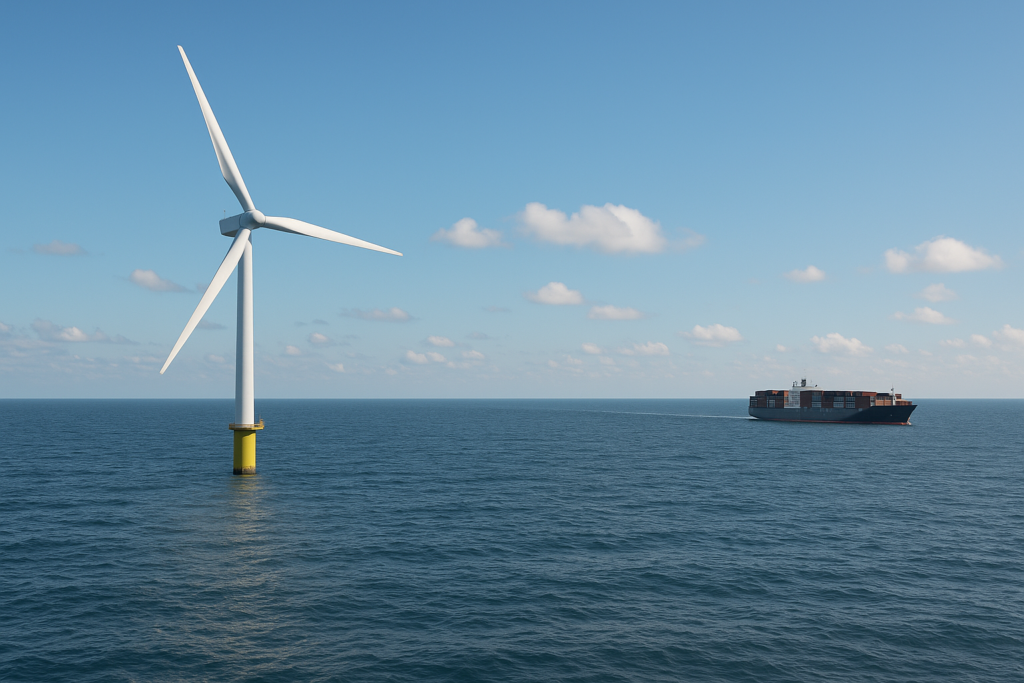As the UK races toward its 2030 offshore wind target, the past three CfD allocation rounds tell a story of missed opportunities and rising ambitions.
Here at NeuWave, we recognise that offshore wind is key to the future of renewables in the UK. Success means understanding the failures, and so in this post, we’re going to break down AR5, AR6 and AR7.
What happened, why it matters, and what it means for the sector’s future.

Understanding the UK’s Contracts for Difference
The UK’s Contracts for Difference (CfD) scheme has been the government’s framework for supporting low carbon energy since 2014; facilitating development and leasing contracts between the government and low carbon energy producers.
Designed to protect energy producers from market price volatility, and manage the cost of electricity generation in the UK, the CfD is funded by all electricity suppliers through the quarterly CfD Supplier Obligation Levy. Low carbon energy generators are able to win CfD contracts through a competitive auction system, and keep the contracts by reaching financial and productivity milestones.
Any eligible renewable energy generator located in Great Britain can submit a bid, and projects that win a CfD get a strike price (fixed reference price) for the electricity they produce.
What is the UK offshore wind target by 2030?
The UK set ambitious targets for 2030, which are drawing ever-nearer in the face of an energy price crisis.
In an effort to accelerate towards broader net-zero goals, last year the Labour Government committed to increasing its offshore wind capacity by 400% by the end of the decade. This includes up to 5 GW of floating offshore wind – a major expansion from the current operational levels for the relatively new industry.
The net-zero “Clean Power 2030” strategy, outlined by the National Energy System Operator, further confirms a target range total of between 43-51 GW for offshore wind.
It’s becoming increasingly evident, however, that delivery of this level of capacity is going to take record-breaking auction success (most essentially during the upcoming AR7), accelerated supply chain development, infrastructure upgrades, and streamlined planning frameworks to avoid falling significantly short.
Recent CfD results
By guaranteeing a price for a defined period (currently set at 20 years), CfD contracts reduce production and investment risks for renewable energy developments.
So far, there have been 6 CfD allocation rounds. And while the goal is de-risked investment in renewable generation, it’s been a slow start. The Contracts for Difference scheme has been running for over a decade now, but electricity prices in the UK are higher than ever.
Why is that? We’ve had a look at some recent CfD auction results (AR5, AR6, and the highly anticipated, upcoming AR7), and the wider landscape of renewable energy production to see why they’re not on track; and how we’re going to reach the government’s offshore wind and net-zero targets.
Allocation Round 5 results
Held in 2023, allocation round 5 (AR5) notably saw no new offshore wind projects being awarded contracts. This stemmed largely from the government’s administrative strike price cap of just £44/MWh, which fell far short of commercial viability for suppliers amid supply-chain and financing cost pressures – including steel and turbine expenses being inflated by over 40% compared to previous auction periods.
In place of offshore wind, AR5 handed out approximately 3.7 GW of capacity heavily weighed towards solar PV and onshore wind projects, as well as geothermal energy making its CfD debut.
This outcome was a red flag for the UK’s offshore wind ambitions; and a major setback for delivering 2030 targets.
Allocation Round 6 results
With a renewed commitment to the CfD scheme last year, Allocation Round 6 was a historic and resounding success. AR5 gave the UK no new offshore wind projects; but with AR6, record offshore wind capacity was secured, putting the industry back on track in 2024.
A total of 9.6 GW was awarded across 131 projects, including around 6 GW of fixed-bottom offshore wind, and the UK’s first commercial-scale floating offshore wind project (forecast to provide approximately 400 MW to the grid).
The results of AR6 signalled a hopeful reversal from AR5, with Energy UK noting that this round helped “restart the offshore pipeline and restore developer confidence”.
This was a critical manoeuvre back towards the 2030 targets.
Allocation Round 7 results
CfD Allocation Round 7 is currently taking place (August 2025), and the pressure is on. Applications formally opened a couple of weeks ago, and will remain open until 27th August.
AR7 has been split, with one stream exclusively reserved for offshore wind development. And it’s set to be the largest round yet, with the government raising administrative strike price caps to £113/MWh for fixed-bottom, and £271/MWh for FLOW developments. Contract duration has also been extended to 20 years.
The ongoing allocation round will also feature the Clean Industry Bonus (CIB), offering fixed and floating offshore wind applicants the (competitive) opportunity to get extra support for investing in more sustainable supply chains. The CIB application window opened in February.
While supply chain and grid connection reform are essential and welcomed, the timelines of current reform process mean AR7 bidders will enter the auction without knowledge of whether their connection date will remain the same. This could cause some reservations. Unfortunately, that’s more uncertainty for AR7.
Quick look: What do the AR5, AR6 and AR7 results mean for the future of offshore wind?
| AR5 (2023) | 0 new offshore wind capacity (£44/MWh strike price) |
| AR6 (2024) | 4.9 GW fixed-bottom offshore wind (£58.87/MWh strike price) 400 MW floating offshore wind (£139.93/MWh strike price) |
| AR7 (2025) | Between 15 GW and 23 GW needs to be procured across AR7 and AR8 |
Industry estimates suggest that 15-23 GW must be secured across AR7 and AR8 (next year) to stay on track.
That means record auction volumes, higher strike prices, and faster grid and supply-chain build out. And the failure of AR5 underscored the risk of missing the UK’s 50 GW by 2030 offshore wind targets. AR6’s rebound was encouraging, but alone it isn’t enough.
Without these, the UK risks falling short of its flagship clean energy milestone; and it sets a discouraging precedent for future net-zero targets.
Evaluating the Contracts for Difference scheme
The CfD scheme continues to be a cornerstone of the UK’s low-carbon power transition. Its two-way payment mechanism helps shield consumers from windfall profits by generators when wholesale prices spike (nor do those generators face blanket windfall taxes thanks to this design).
Recent reforms to contract lengths are intended to lower financing costs and build stronger investor certainty, and industry groups like Energy UK welcome these tweaks; along with relaxed eligibility criteria, and clearer auction parameters.
However, the scheme also has notable downsides. Market distortions leave CfD-backed producers bidding at negative wholesale prices, undermining the unsubsidised competitors and potentially weakening the UK’s energy security. This is of particular concern with the rise of international gas prices, and effects of this on the UK electricity market.
High current CfD strike prices (£90–£111/MWh) combined with grid remodeling (estimated £80 billion over five years) mean meaningful consumer savings may not materialise before 2044.
To evolve effectively, CfD could benefit from several reforms:
- Introduce tiered and technology-specific auctions and longer-term capacity targets to guide strategic deployment
- Offer more delivery flexibility, including variable commissioning windows and phasing for both fixed and floating offshore wind, to mitigate supply-chain and grid delays, and de-risk investments
- Improve transparency in how CfD repayments are passed to consumers to ensure fair value and accountability
The Contracts for Difference scheme is a vital cornerstone, but its future impact hinges on addressing market design, equity, resilience, and strategic clarity.
From the cautionary tale of AR5, to the rebound in AR6, and the record-breaking ambitions of AR7, the trajectory of the CfD scheme will define the pace and scale of the UK’s offshore wind build-out.
At NeuWave, we see both the risks and the potential: decisive policy, competitive auctions, and robust supply chains can turn these targets into reality. The next two allocation rounds will be pivotal, and the industry can’t afford another misstep.
Streamline the bureaucracy…
Hit the ground running with regulation-ready site assessment reports, built with AI analysis for confident decision making from the very first steps.

